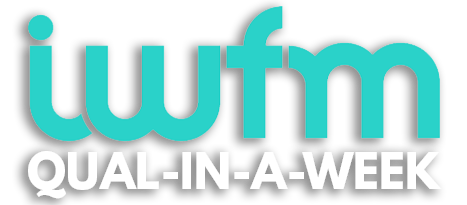Hi there,
We’re moving onto a new topic this week, and it’s one that is inherent across all facilities management operations.
This week, we’re going to be talking about risk.
Now you’re probably aware of risk in the context of health and safety. It’s a well recognised part of the role of the facilities manager.
However what you may not realise is that when we talk about risk management, we’re referring to risk in a much broader context, of which Health and Safety is just a small part.
What is Risk?
A risk is any threat that an event or action will adversely affect the business and its objectives.
Risk can be defined as the combination of the probability of an event occurring and the consequences if that event does occur. This gives us a simple formula to measure the level of risk in any situation.
Risk = Probability x Consequences
Risk to a business can come from within, for example through the actions of employees, the decisions of management or the choice of cash flow and accounting policies.
There are also external threats – risks posed by factors beyond the control of the company or its directors.
Risks can be categorised under the following four headings:
Financial Risk
Internal – e.g. liquidity and cash flow
External – e.g. interest rates, inflation, foreign exchange credit
Strategic Risks
Internal – e.g. Research and Development, Mergers and Acquisitions integration
External – e.g. intellectual capital, competition, customer changes, industry changes, customer demand
Operational Risks
Internal – accounting controls, IT systems, recruitment, supply chain
External – regulations, culture, board composition
Hazard Risks
Internal – employees, properties, public access, products and services
External – contracts, natural events, suppliers, environment
Source: The Risk Management Standard – IRM, Alarm & AIRMIC Stephen Womack 2006
Some risks have traditionally been given more attention than others. The danger of a factory burning down, for example, is a clear threat to the future of any business.
Other risks are more subtle, such as overly generous credit terms for customers, lax internal accounting controls or even a slight change in the market.
Therefore, other possible considerations should be taken into account.
- Occurrence – when is the risk likely to occur
- Urgency – how much mitigation time is there
- Manageability – how easily can the risk be handled
- Dependencies – does it follow or trigger other events
- Proximities – how close is the risk to the personnel well-being of employees.
All these factors may impact on the prioritization of dealing with the risks.
The correct identification of risk is vital if the risk is to be mitigated. An event is only a risk if there is a degree of uncertainty associated with it. Let us consider a Project Management example to illustrate the point.
The value of money and therefore the cost of the project will change over the course of the project – through experience it is safe to say that this is certain. But by how much – this is uncertain and therefore this is where the risk lies.
For instance, imagine a large-scale infrastructure project that was given the green light back in 2020 and due to start in 2021.
In case you missed it (we’re sure you didn’t) inflation in the UK increased exponentially over the course of 2021 and 2022, reaching a peak of 11.1% in October 2022.
Because of this, project costs such as materials, labour and logistics will likely have increased significantly during this period and your project will likely have gone significantly over budget as a result.
When identifying risk, make sure you describe the risk itself and not the cause or the effect.
Risk management is a key part of a facilities manager’s role. Health and safety is the obvious example, but remember that there are risks involved with many other activities which need to be properly assessed and controlled.
Next time we’ll take a look at the four overarching ways that we can mitigate against risk and reduce its impact.
Have a great week!
Chris and the Xenon Team
P.S. If you haven’t already studied or started studying for an IWFM qualification, which will cover topics like this in depth and fully assess your understanding, you may want to have a look at our guide to the IWFM Qualifications which will give you a full breakdown of how they work and what’s involved in the different levels. You can download it here.
P.P.S. If you’re already considering taking a qualification but don’t know which level to go for, a good starting point is our One-Minute-Leveller tool, which will ask you a few questions and give you a recommendation based on the result. You can access it here.



